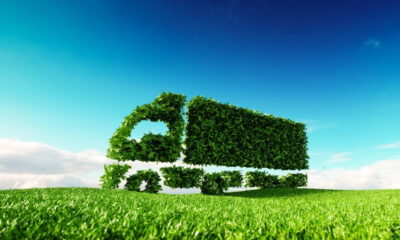Features
High times & High Lines
Rob Steadman looks into the USA’s ‘seedy overbelly’, and the modern trend of sustainable urbanism.
New York New York! The Big Apple, what a town! The City that never sleeps! You’ve heard all the clichés, but clichés come into being for a reason.
 Rob Steadman looks into the USA’s ‘seedy overbelly’, and the modern trend of sustainable urbanism.
Rob Steadman looks into the USA’s ‘seedy overbelly’, and the modern trend of sustainable urbanism.
New York New York! The Big Apple, what a town! The City that never sleeps! You’ve heard all the clichés, but clichés come into being for a reason.
Manhattan is truly a sight to behold. A mighty concrete jungle that defiantly towers as a symbol of US economic prosperity, it’s constantly at the forefront of innovation in urban planning and cutting edge policies and as home to the United Nations, is one of the most important cities in the world.
There’s little wonder that no other city has served as a shooting location for the film industry as many times as the breathtakingly cinematic New York. The Queensboro Bridge, the Chrysler Building, the Empire State Building, Brooklyn Bridge, the Statue of Liberty – everyone instantly recognises the truly iconic skyline.
Less people, however, may recognise the Manhattan High Line.
The High Line is a one mile linear park built upon a section of raised freight railroad, redesigned as an aerial greenway on the Lower West Side’s Meatpacking district.
The park features a mile of grassland, and flora and fauna that cut through the concrete backdrop. It is now a trendy and environmentally friendly attraction that is stimulating the neighbourhood’s development.
New York is the most populated city in the USA, with over 8 million people according to recent census figures. Overcrowding, pollution and crime have all plagued the city in the past twenty years.
Given its nature, it may seem odd for Blue & Green Tomorrow to be reporting the virtues of a bustling metropolis. However, the High Line represents an innovative and environmentally ethical idea brought to fruition that has now sparked a trend of rooftop gardens, farms and official public parks across the USA and beyond, becoming known as sustainable urbanism.
Sustainable urbanism, or new urbanism, is a concept that started around the early 1980s. It incorporates environmentalism and aims to create walkable urban areas designed with open spaces, lowered traffic congestion and environmentally friendly and resource efficient green buildings.
In the late ‘90s, Joshua David and Robert Hammond, residents of the West Chelsea neighbourhood, formed Friends of the High Line – a non-profit organisation seeking to transform a former eyesore into a public park.
This novel idea took off, and six years later the ribbon was cut by Mayor Bloomberg, opening the park in 2005.
The story of the High Line is quite remarkable as two neighbourhood average Joes proved that thinking big can pay off, and recycling is beneficial and economic, even at an infrastructural level.
 Chicago – ‘America’s Second City’ – has very much run with the idea and is leading the way in green rooftops. The Windy city now boasts over four million square feet of rooftop gardens or ‘green roofs.’
Chicago – ‘America’s Second City’ – has very much run with the idea and is leading the way in green rooftops. The Windy city now boasts over four million square feet of rooftop gardens or ‘green roofs.’
Green roofs absorb CO2, and reduce the urban heat island effect, whilst also providing a natural habitat for wildlife, and improving urban air quality.
Furthermore it adds to commercial property value. The Chicago green roof programme is revolutionary with the city providing grants, awards and incentives to encourage individuals and businesses to convert their roof space to green land. These incentives have transformed rooftops across Chicago.
Now Chicago plans to develop the Bloomingdale trail; a proposed liner park running 2.65 miles through central Chicago. Built upon an old Canadian Pacific Railways-owned embankment, it was conceived almost at the same time as the High Line in New York, but was rejected twice for funding. It finally secured funding in 2007 with an estimated construction coast of $70m.
The High Line concept has certainly spread with Philadelphia also developing its own high line.
Each section of the New York City High line cost $153 million to create, but have stimulated an estimated $2 billion in new developments around the area including offices hotels, and art galleries.
High Lines and green roofs however, do not seem to have flourished in the UK as they have in the USA, but the Rolls Royce Motor Car Company do have one of the largest green roofs in Europe in Goodwood, West Sussex.
The University of Sheffield have been pushing the development of green roofs for some years, setting up the Green Roof Audit in 2010 which aims to “lead the way on blue and green infrastructure”.
They’ve concluded that the creation of a Green Roofs Policy within Sheffield planning, has led to the creation of approximately 25,000m² of green roof within the city.
Germany, however, is the world leader in green roof technology and have a long standing history.
In the 1980s the Germans had already mastered and pioneered green roof technology when it was unheard of in the rest of the world. It is the country with the most green roofs in the world today, with around 10,000,000m² of green roofs being constructed each year.
The art is something taught on Landscaping degrees at their universities, and is considered to be highly important, with green roof research centres in Hannover, Berlin, Geisenheim, and Neubrandenburg.
The benefits of a green roof are substantial, and with urban sprawl being a continued issue, there is clear academic thinking that green roofs should be something policymakers take into account.
Dr Nigel Dunnett of Sheffield University secured EU funding to establish the Green Roof Research and Demonstration Centre at the University of Sheffield, which is now the UK’s main centre for multi-disciplinary green roof research.
With continuing urbanisation and the UK’s desire to cut carbon emissions by 80% by 2050, green roofs could be a way forward.
Already the UK offer subsidies on homes with renewable energy sources like solar power with the Feed-In Tariff scheme, and incentives like those seen in Chicago could spark a trend of UK green roofs and contribute to improved air quality, and make hundreds, if not thousands of buildings more energy efficient.
Furthermore, turning disused railway lines into linear parks offers urban regeneration and the same benefits as greenroofs.
Standing atop a roof in the City of London, looking out at an expanse of rooftop gardens, would be a beautiful and symbolic sight: a stark green message that we, as a country and a global community, want to combat climate change.
Picture sources: David Berkowitz & Allison Meier


 Environment10 months ago
Environment10 months agoAre Polymer Banknotes: an Eco-Friendly Trend or a Groundswell?

 Environment11 months ago
Environment11 months agoEco-Friendly Home Improvements: Top 7 Upgrades for 2025

 Features9 months ago
Features9 months agoEco-Friendly Cryptocurrencies: Sustainable Investment Choices

 Features10 months ago
Features10 months agoEco-Friendly Crypto Traders Must Find the Right Exchange






























